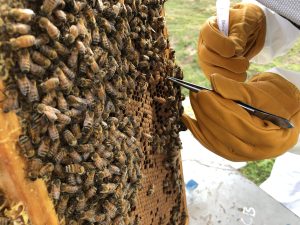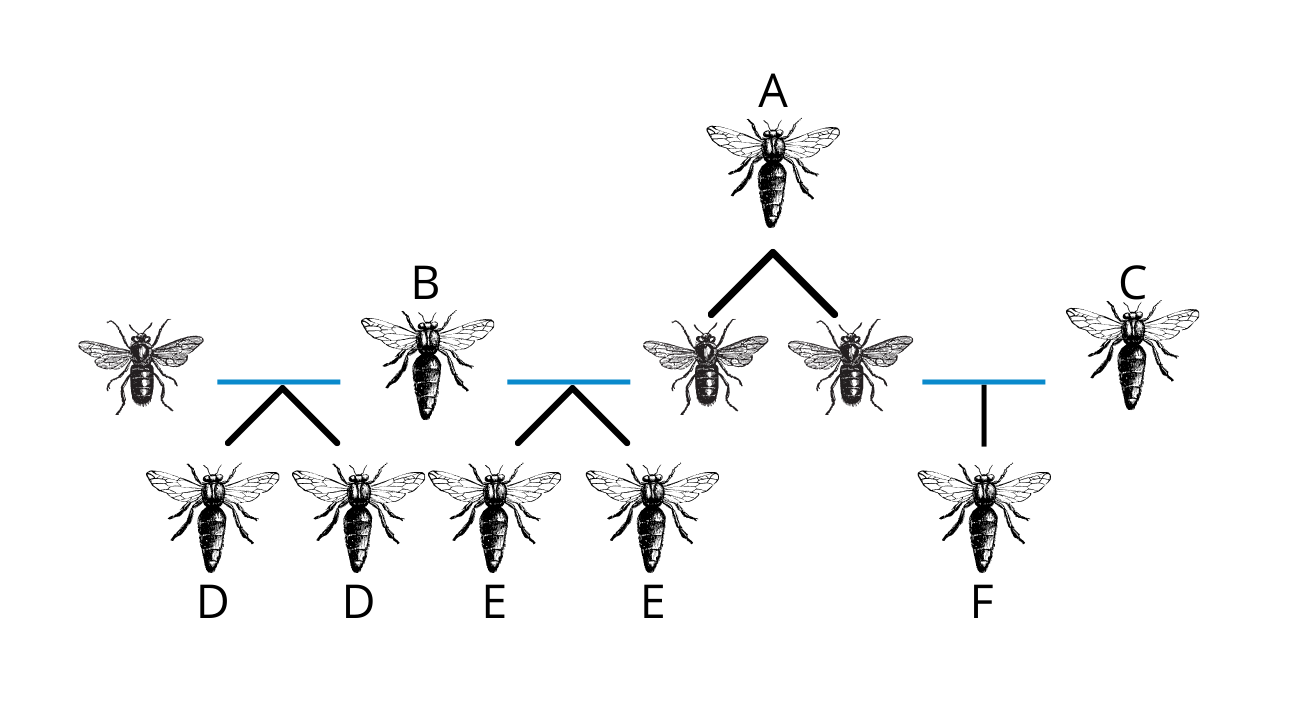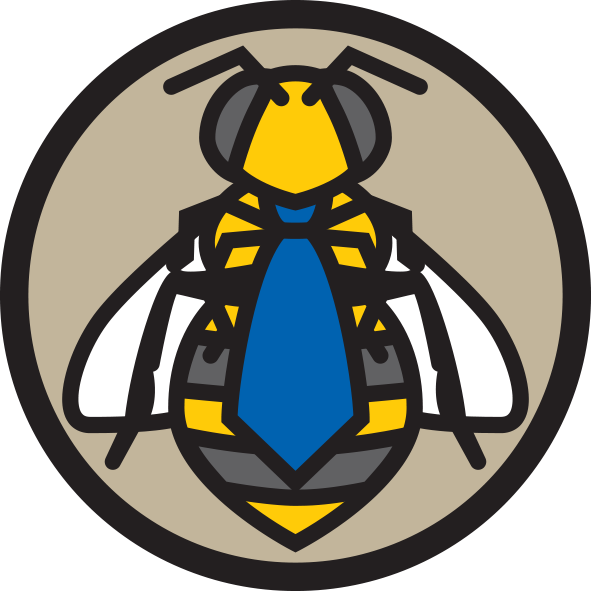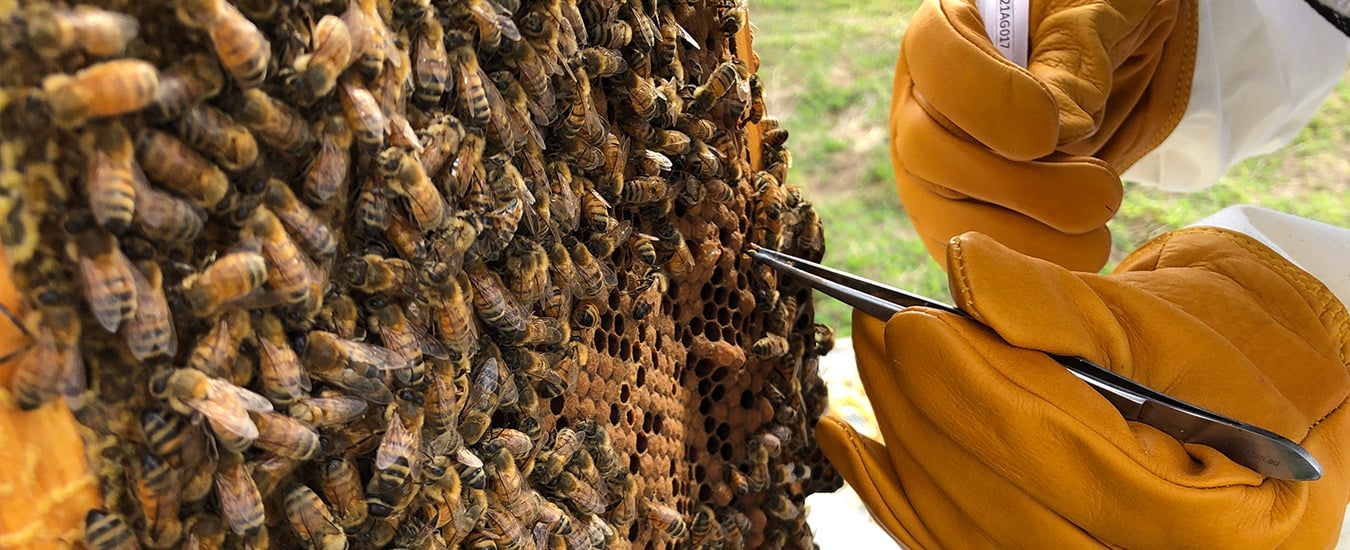Our national honey bee genetic improvement program, Plan Bee, is offering free genetic testing to bee breeders who are collecting performance data. This includes not only commercial queen breeders, but also those who breed queens for themselves.
What does sampling for genetic testing entail?
What do you collect?
There are several options, which will give us the data we need. In order of preference these are:
- 6 drone pupae
- 6 large drone larvae
- Less than 6 drone pupae or large larvae
- 1 worker pupae
- 1 large worker larvae
We’ve found that the closer the bee is to emergence the better the quality of the DNA we get. If using larvae, we ask for larger larvae as we need a certain amount of tissue, so please choose ones that are close to being capped. For almost mature bees we will generally take 2-3 legs off each bee. This gives you an idea of how much sample we need. If the samples are still young they will tend to get punctured by the tweezers, this is fine. Often the heads come off pupae. Just give us the largest piece you get, ensuring that it is the equivalent of at least 3 legs in size and we can tell that this is a sample rather than something that fell off another sample.
Using developing bees ensures that they are the offspring of the resident queen. Drones are preferred because they come from unfertilised eggs. This means they carry only the queen’s DNA. By taking 6 of them we have a 95% chance of getting both copies of the queen’s DNA at each genetic marker.
Sometimes a colony is not producing drones. In that case 1 developing worker will give us half the queen’s DNA. We don’t want more than 1 worker as they are likely to have different fathers, which will complicate things for the analysis. Some people have also chosen to provide virgin queens.
Any breeder wishing to chat about their options for sample collection can contact Nadine Chapman on
na************@sy****.au
or 02 9351 2267 to discuss options.
How do you collect samples?
There are several options available for sample collection.

A student sampling drone pupae.
Photo courtesy Nadine Chapman
Samples must be kept as cold as possible to ensure the quality of DNA. If the DNA degrades the sample may not be usable. We will provide a kit that includes:
- Labelled tubes
- Tweezers
- Alcohol wipes
- Sample sheet
Step by step instructions:
- Using the tweezers put the samples in the tube
- Record the details on the sample sheet
- Wipe the tweezers with alcohol wipes or sanitiser wipes between colonies to ensure that tissue from the last colony doesn’t get mixed into tissue from the current colony.
- If possible, take an ice box with ice blocks or ice cubes or a car freezer to keep the samples cold while working and in transit.
- Store samples in the freezer once you’re home.
Note, if someone from our team is assisting you we will likely bring dry ice to keep the samples on.
How can you get the samples to us?
Please don’t post the samples. They will get hot and the DNA will degrade. We have a number of options for transport depending on logistics:
- We will personally come and pick the samples up
- We will organise them to be couriered on dry ice
- We will ask you to drop them off at a location
How are the samples processed?
Samples are processed in batches of 191. We need to wait until we have this number in order to make the best use of our funding. Once we have enough samples they are sent to the Australian Genome Research Facility. The data then comes to the University of Sydney, before entering the database held by the Animal Genetics and Breeding Unit (AGBU), who will analyse it. The process will take at least 2 months, and could take a lot longer depending on the volume of samples coming in and staff capacity.

Samples in the lab.
Photo courtesy Nadine Chapman
Why participate?
In order to calculate Estimated Breeding Values (EBVs) we need to know the relationship between the queens. Many bee breeders are not yet keeping pedigree records (the queen mother ID). If we do genetic testing then we don’t need a pedigree. However, pedigrees are extremely useful and we recommend developing systems to keep track of pedigree. Keeping pedigrees has the additional benefit of not having to wait for the results of genetic testing in order to get EBVs.
Genetic testing also tells us more about the relationships. This is because we can determine which queens are full sisters and which queens are half-sisters (Figure 1). It can also identify relationships through the male line. EBVs calculated using genetic testing are therefore more accurate.

Figure 1: Individuals marked “D” are full sisters as they have the same mother and father. Individuals marked “E” are also full sisters. Individuals marked “D” are half-sisters of individuals marked “E”, because they have the same mother but different fathers. Individuals marked “E” are related to individual “F” through the male line, as their mothers both mated with drones produced by individual “A”. It is only possible to determine the relationship to individual “F” with either genetic testing or the use of artificial insemination with single drones.
Where can you get further help?
We understand that implementing new procedures can be daunting, and that you have businesses to run. Bee breeders can register for assistance in performing colony evaluations and sampling for genetic testing. Please use this form to register your interest or contact Nadine Chapman on
na************@sy****.au
or 02 9351 2267.
Acknowledgements:
- Plan Bee (National Honey Bee Genetic Improvement Program) is supported by funding from the Australian Government Department of Agriculture, Water and the Environment as part of its Rural Research and Development for Profit program. The project is further supported by AgriFutures Australia, the Department of Regional NSW, University of Sydney, University of New England Animal Genetics and Breeding Unit, Better Bees WA Inc, Wheen Bee Foundation, Costa Group, Olam, Beechworth Honey, Monson’s Honey and Pollination, South Pacific Seeds, Australian Queen Bee Breeders Association, Australian Honey Bee Industry Council, and commercial beekeepers.
- This article was peer-reviewed by Erica Mo and Corinne Jordan.


